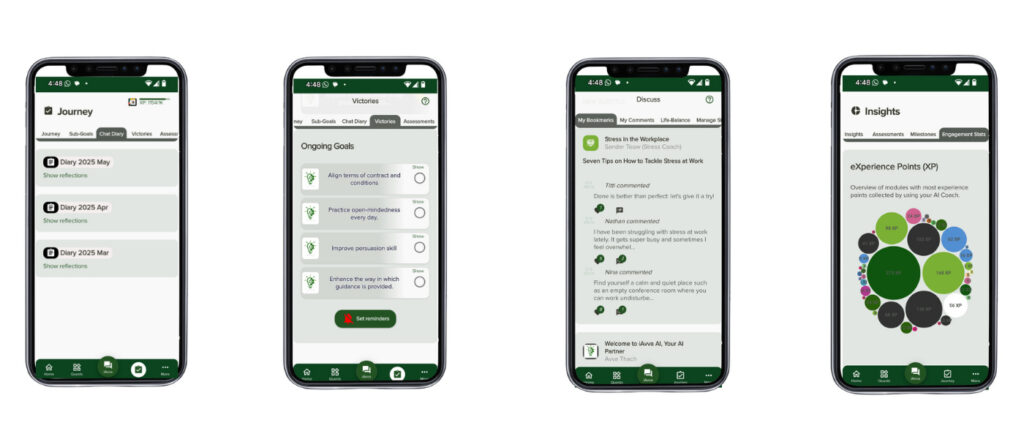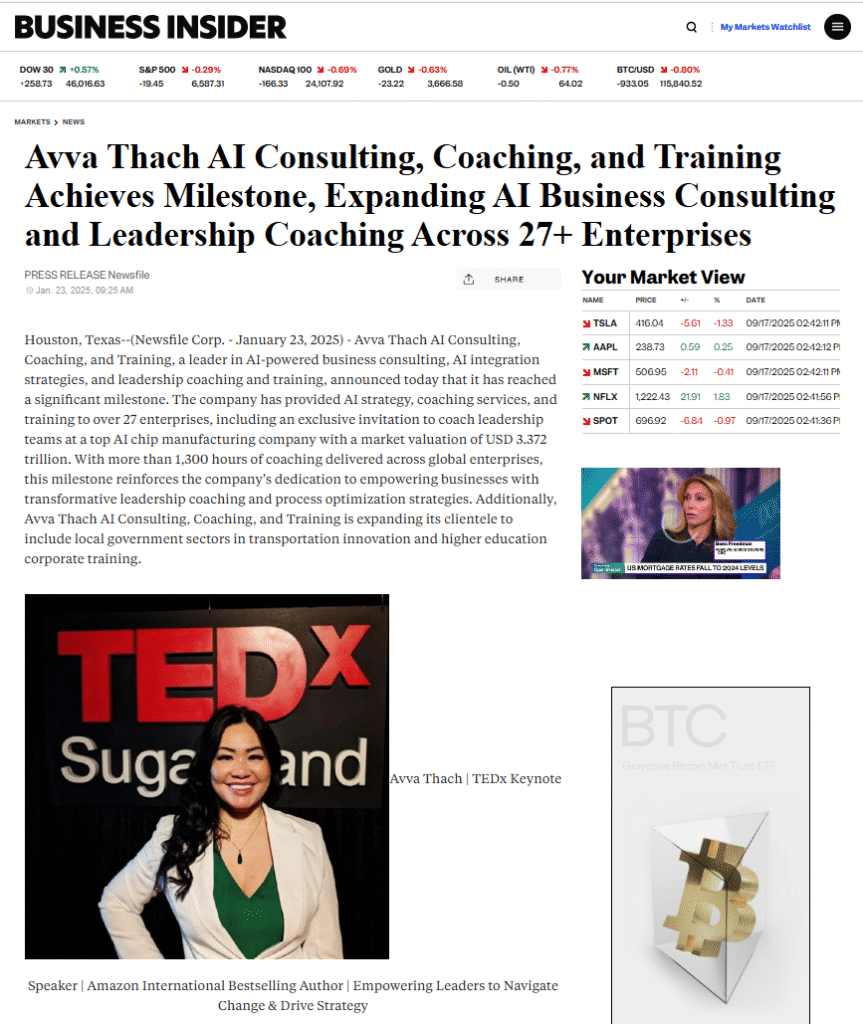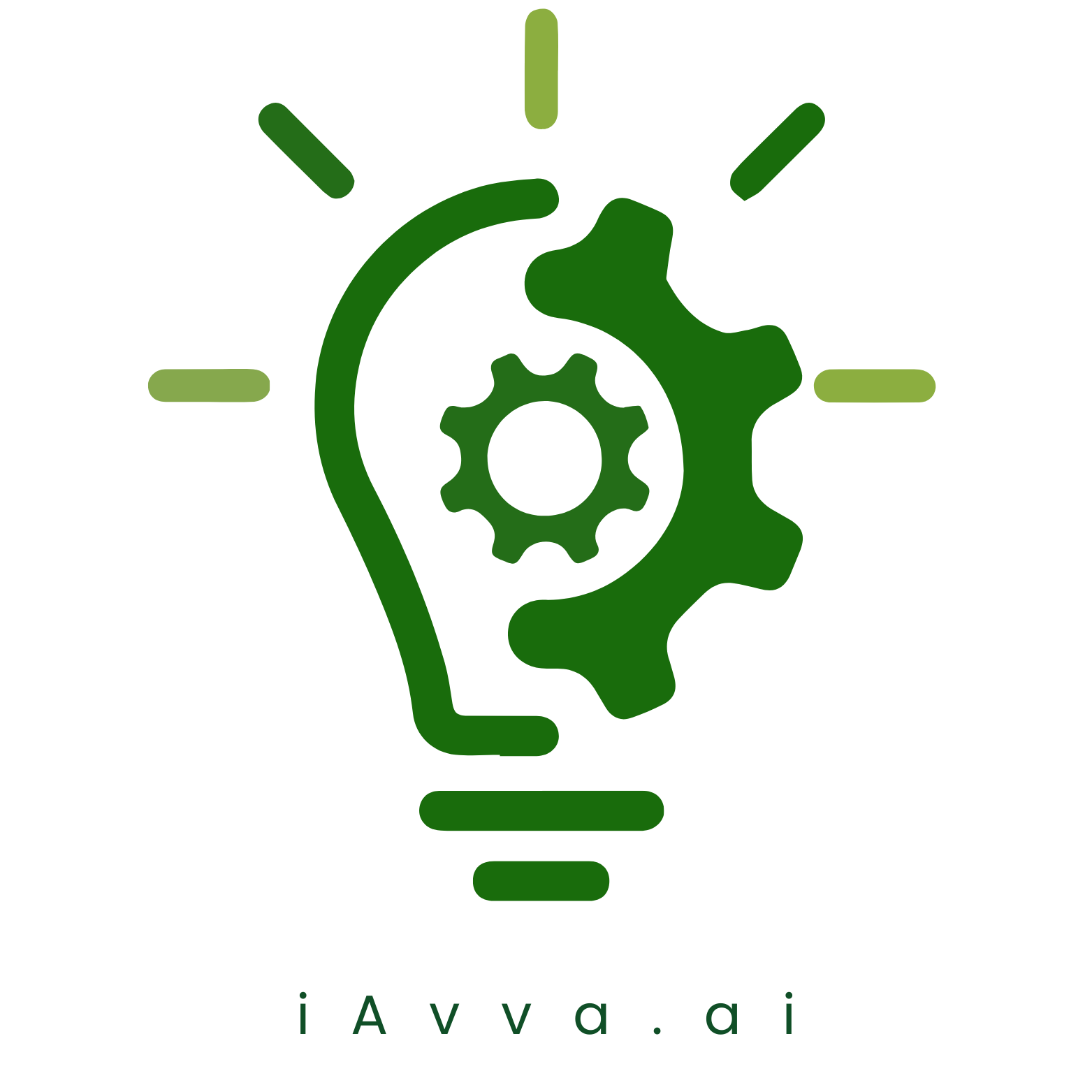From Vision to Reality: Creating an Effective AI Implementation Roadmap
From Vision to Reality: Creating an Effective AI Implementation Roadmap
Introduction
Many organizations are still fumbling in the dark when it comes to their AI implementation plan. It’s not just about slapping some algorithms onto existing processes and calling it a day. The reality? A strategic approach is essential for transforming AI from a buzzword into a powerful tool that drives measurable results.
Consider this: according to the International Data Corporation, a staggering 93% of companies are currently knee-deep in digital transformation efforts. Yet, only a fraction have a coherent strategy for integrating artificial intelligence into their operations. This disconnect often leads to wasted resources and missed opportunities.
The path to effective AI deployment isn’t straightforward. It requires careful planning, alignment with business goals, and an understanding of the unique challenges each organization faces. An AI integration roadmap is not merely a checklist; it’s a dynamic framework that evolves as your organization grows.
Key Insight: A well-designed AI implementation plan can streamline operations, enhance decision-making, and ultimately boost profitability. Failing to devise such a plan? That’s like trying to navigate without a map good luck with that!
This blog post will guide you through the intricacies of creating an effective AI implementation roadmap. We’ll explore essential components, best practices, and actionable steps for successfully deploying AI solutions tailored to your organization’s needs.
Understanding the Importance of an AI Implementation Plan
Many organizations leap into the world of artificial intelligence with a sense of excitement, only to find themselves lost in a maze of complexity. Here’s the kicker: without a solid AI implementation plan, even the most ambitious AI projects can stumble before they take off.
A well-structured roadmap is not just a luxury; it’s a necessity. It serves as your guiding star, helping you navigate through the fog of uncertainty that often surrounds AI deployment. Think of it as your personal GPS without it, you might end up driving in circles or, worse yet, off a cliff.
According to McKinsey, organizations that implement AI with a clear strategy are 3 times more likely to achieve significant improvements in productivity and efficiency.
The Role of an AI Implementation Plan
Let’s break down why this plan is critical:
- Aligning Goals: Your business objectives should dictate your AI strategy. An effective plan ensures that every step taken is in sync with your overarching goals.
- Resource Management: Implementing AI solutions often requires substantial investment both in technology and human resources. A detailed plan helps allocate these resources efficiently, preventing waste and ensuring maximum ROI.
- Risk Mitigation: The world of AI is fraught with potential pitfalls. An implementation plan identifies risks upfront and outlines strategies to mitigate them, allowing you to pivot quickly if things go awry.
- Measurable Milestones: Without clear milestones, it’s easy to lose sight of progress. An implementation roadmap sets specific targets and timelines, enabling teams to track success and make necessary adjustments along the way.
The Consequences of Skipping This Step
Ignoring the importance of an AI implementation plan can lead to disastrous outcomes. Consider this: companies that rush into AI adoption without proper planning often face issues like:
- Lackluster Results: Projects fail to deliver expected outcomes due to unclear objectives or misaligned strategies.
- Bottlenecks: Teams become overwhelmed by unstructured workflows and unclear priorities, leading to delays and frustration.
- Cultural Resistance: Employees may resist adopting new technologies if they don’t understand how these innovations align with their roles or the company’s vision.
The best part? Crafting an effective AI implementation plan doesn’t have to be daunting. With the right framework and insights from industry leaders, you can transform your organization’s approach towards artificial intelligence into one that not only embraces change but thrives on it. Ready to get started?
Key Components of an Effective AI Implementation Roadmap
Let’s face it: crafting an AI implementation plan isn’t just about slapping together some tech and hoping for the best. It’s like trying to bake a soufflé without a recipe sure, you might get lucky, but more often than not, you’re left with a flat disaster. A solid roadmap is your secret ingredient for success.
In fact, research shows that organizations with a clear AI strategy are 3.5 times more likely to achieve significant business outcomes from their AI initiatives (McKinsey).
Vision and Objectives
Your vision is the North Star guiding your AI journey. What do you want to achieve? Whether it’s enhancing customer experience or automating mundane tasks, define your objectives clearly. This clarity helps align teams and resources toward common goals.
Stakeholder Engagement and Alignment
No one likes being left out of the party, especially when it comes to something as transformative as AI. Engage stakeholders early on this includes everyone from top executives to frontline employees. Their insights can shape your approach and foster buy-in when it’s time to roll out your plan.
Resource Allocation and Budgeting
You wouldn’t build a house without knowing how much cash you have in the bank, right? The same goes for your AI deployment plan. Assess your available resources both human and financial and allocate them wisely. This might mean investing in new talent or technology that aligns with your objectives.
Timeline and Milestones
A roadmap without timelines is just wishful thinking. Break down your implementation into manageable milestones that allow for tracking progress and making adjustments along the way. Think of it as setting up checkpoints on a road trip you need to know where you’re going and how long it will take!
- Vision: Define what success looks like.
- Engagement: Involve key stakeholders early.
- Resources: Budget effectively for tools and talent.
- Timelines: Set realistic milestones for accountability.
The interesting part? Many organizations stumble at these foundational steps because they underestimate their importance. Skipping them can lead to misalignment and wasted resources down the line nobody wants that!
A comprehensive AI integration plan doesn’t just set you up for today; it prepares you for future challenges in an ever-evolving landscape. So take these components seriously they’re not just boxes to check off; they’re critical pillars supporting your journey toward successful AI adoption.
Steps for Implementing AI Solutions Successfully
Struggling to get your AI implementation plan off the ground? You’re not alone. Many organizations face hurdles when trying to turn their AI dreams into reality. But fear not! Here are some actionable steps that can help you navigate the maze of AI deployment.
Key Insight: Over 70% of organizations report that they fail to achieve significant ROI from their AI initiatives due to poor planning and execution.
Assessing Current Capabilities and Needs
Your first step is akin to checking your luggage before a trip make sure you have everything you need! Conduct a thorough assessment of your current technological landscape, workforce skills, and existing data infrastructure. This will help you identify gaps and opportunities for AI integration.
- Evaluate existing data sources and quality.
- Analyze team skill sets related to AI technologies.
- Identify business processes that could benefit from automation or enhancement through AI.
Developing an Artificial Intelligence Strategy Framework
No one likes wandering aimlessly without a map, especially in the complex world of AI. Craft an artificial intelligence strategy framework that aligns with your business goals. This should include:
- Vision Statement: What do you aim to achieve with AI?
- Objectives: Set measurable goals (e.g., reduce operational costs by 20%).
- Key Performance Indicators (KPIs): How will you measure success?
Designing the AI Integration Roadmap
Your roadmap is like a GPS for your AI journey it keeps you on track! Outline the specific steps needed for successful integration, including timelines, resources, and responsible teams. Consider using agile methodologies to remain flexible as technology evolves.
Pilot Testing and Iterative Feedback Loops
Don’t go all-in without testing the waters first! Launch pilot projects to validate your assumptions and gather data on performance. Utilize iterative feedback loops to refine your approach continuously. This way, you can pivot quickly if something isn’t working as planned.
The reality is that implementing AI solutions isn’t just about technology; it’s about people too. Engage your workforce throughout this process training sessions can empower them with necessary skills while fostering a culture of innovation. By following these steps, you’ll be well on your way to creating an effective ai implementation plan that drives measurable results!
Best Practices for AI Deployment Strategies
AI is not just a buzzword; it’s a game-changer. But here’s the catch: without a solid AI implementation plan, your ambitious tech dreams can quickly turn into nightmares. Think of it like trying to bake a soufflé without a recipe chaos ensues!
Aligning business goals with AI initiatives is crucial. A staggering 70% of AI projects fail due to misalignment with strategic objectives.
Aligning Business Goals with AI Implementation Efforts
Start with the end in mind. What are you hoping to achieve with your AI deployment? Is it increased efficiency, enhanced customer experience, or perhaps data-driven decision-making? Whatever it is, ensure that your AI adoption framework aligns closely with your overall business strategy. This alignment not only drives clarity but also secures buy-in from stakeholders who need to champion the project.
Building a Culture of Innovation and Trust in AI Technologies
If your team views AI as just another tech fad, you’re in for a rough ride. Cultivating a culture that embraces innovation is essential for successful AI deployment strategies. Encourage experimentation and celebrate failures as learning opportunities. Consider hosting hackathons or innovation days where employees can explore AI applications relevant to their roles. This approach not only demystifies technology but also fosters ownership and excitement.
Continuous Learning and Adaptation in AI Projects
The landscape of artificial intelligence is ever-evolving what worked yesterday might be obsolete tomorrow. Establish feedback loops within your teams to adapt quickly to changes and insights gained from ongoing projects. Regular training sessions can help keep everyone on the cutting edge of technology, ensuring that your AI integration roadmap remains relevant and effective.
Avoiding Common Pitfalls
- Skipping the Pilot Phase: Always test before full-scale deployment. Pilot programs allow you to identify potential issues early on.
- Lack of Clear Metrics: Define success metrics upfront; this helps in measuring ROI and understanding impact.
- Ignoring Stakeholder Input: Engage all relevant parties early on; their insights can guide better decision-making.
Your journey towards an effective AI implementation plan doesn’t have to be daunting. By aligning business goals, fostering a culture of trust, and committing to continuous learning, you’re setting up for success in the rapidly changing world of artificial intelligence.
The road ahead may be challenging, but remember: every successful journey starts with a well-designed map!
A Comprehensive Guide to Machine Learning Implementation
Machine learning isn’t just a buzzword; it’s the backbone of many successful AI implementation plans. Yet, diving into this tech without a solid plan can feel like trying to cook a soufflé without a recipe messy and likely to flop. Let’s break down the essentials.
Key Insight: 70% of AI projects fail due to poor implementation strategies. Don’t be part of that statistic!
Differentiating Between AI Technologies
Understanding the landscape of AI technologies is crucial for your AI deployment plan. Here’s a quick rundown:
- Machine Learning (ML): Algorithms that learn from data and improve over time.
- Deep Learning: A subset of ML that uses neural networks with many layers, perfect for tasks like image and speech recognition.
- Natural Language Processing (NLP): Enables machines to understand and interpret human language think chatbots and virtual assistants.
- Reinforcement Learning: A type of ML where agents learn by interacting with their environment, optimizing actions based on rewards.
Critical Success Factors for Machine Learning Projects
A successful machine learning initiative doesn’t just happen; it requires careful planning. Here are some critical success factors to consider:
- Data Quality: Garbage in, garbage out. Ensure your datasets are clean, relevant, and comprehensive.
- Clear Objectives: Define what success looks like. Is it increased sales? Improved customer satisfaction? Be specific!
- Stakeholder Buy-In: Engage everyone from leadership to frontline employees. Without their support, your project could hit roadblocks faster than you can say “algorithm.”
- Iterative Development: Adopt an agile approach. Test, learn, and adapt as you go. Think of it as fine-tuning a musical instrument practice makes perfect!
A Real-World Example: Netflix’s Recommendation System
If you’re looking for inspiration on how to implement machine learning effectively, look no further than Netflix. Their recommendation system analyzes user behavior to suggest shows and movies tailored to individual preferences resulting in higher engagement rates and customer satisfaction.
This level of personalization didn’t happen overnight; it was built on years of data collection and continuous refinement a true testament to the power of a well-executed AI strategy.
The interesting part? Netflix continually updates its algorithms based on user interactions showing that even giants in the industry must be agile in their approach to machine learning implementation.
Avoiding Common Pitfalls
No one wants their project to go south because they skipped a step! Here are some common mistakes that can derail your efforts:
- Lack of Clear Metrics: Without measuring success, how will you know if you’ve hit the mark?
- Poor Communication: Keeping stakeholders in the dark can lead to misunderstandings and lack of support.
- Narrow Focus: Focusing solely on technology without considering business goals is like building a race car without knowing where the finish line is!
Your roadmap for implementing artificial intelligence should include these considerations right from the start. By being proactive about potential challenges, you’re setting yourself up for success rather than stumbling through the dark.
Navigating Challenges in AI Adoption Frameworks
Implementing an AI adoption framework is like trying to teach a cat to fetch. Sure, it sounds good in theory, but the reality often involves more resistance than you bargained for. The truth is, many organizations face significant hurdles when it comes to their AI implementation plan. Let’s break down some of the most common challenges and how to tackle them head-on.
Did you know? According to a recent survey by McKinsey, 70% of organizations struggle with effectively implementing AI solutions due to cultural resistance and skill gaps. It’s time to change that!
Cultural Resistance to Change
Change can be scary especially when it involves introducing artificial intelligence into the workplace. Employees might feel threatened by AI as they fear job displacement or the unknown. This cultural resistance can create a wall between your shiny new technology and its potential benefits.
- Foster an Inclusive Culture: Encourage open dialogues about AI’s role in the workplace. Transparency about how AI will enhance rather than replace jobs can alleviate fears.
- Champion Change Agents: Identify and empower individuals within your organization who are enthusiastic about AI adoption. Their excitement can be contagious!
- Training Programs: Implement workshops that demystify AI technologies, helping employees understand how they work and their benefits.
Lack of Skilled Talent
The tech talent pool is like a game of musical chairs there are more companies looking for skilled professionals than there are qualified candidates available. This gap can stall your AI deployment plan.
- Upskill Existing Employees: Invest in training programs for your current workforce. A little upskilling goes a long way in bridging the talent gap.
- Collaborate with Educational Institutions: Partnering with universities or coding boot camps can create pipelines for fresh talent eager to dive into the world of AI.
- Leverage Freelance Platforms: If hiring full-time isn’t feasible, consider tapping into freelance platforms to find experts on-demand for specific projects.
Integration Challenges
Your new AI system won’t magically fit into existing workflows it needs a proper home! Integration issues often arise when systems aren’t compatible or when data silos exist within an organization.
- Conduct Thorough Assessments: Before implementation, evaluate current systems and identify potential integration hurdles early on.
- Iterative Implementation: Start small with pilot projects that allow you to test integrations without overwhelming your team or resources.
- Invest in Robust APIs: Ensure that any new technologies have strong application programming interfaces (APIs) for smoother integration into existing systems.
The road ahead may be bumpy, but overcoming these challenges is crucial for creating an effective AI implementation roadmap. By addressing cultural resistance, bridging skill gaps, and ensuring seamless integration, you’ll be well on your way toward successful AI adoption!
The Future of AI Transformation Plans in Business Operations
AI isn’t just a buzzword anymore; it’s the backbone of future business operations. Companies that ignore this reality risk becoming obsolete faster than you can say “digital transformation.” As we look ahead, the AI implementation plan will evolve from a mere checklist into a dynamic strategy that aligns closely with corporate goals.
Here’s the kicker: businesses are no longer just adopting AI for automation. They’re integrating it into every facet of operations from supply chain management to customer service. Think about it: AI-driven insights can predict market trends, optimize inventory levels, and even personalize customer interactions in real-time. This is not science fiction; it’s happening now.
Key Insight: By 2025, it’s estimated that over 80% of enterprises will have integrated some form of AI technology into their daily operations, according to Gartner.
The interesting part? Many organizations still struggle with aligning their artificial intelligence strategy with their business objectives. A successful AI transformation plan requires more than just technology; it demands a cultural shift and an understanding of how AI can complement human capabilities. Organizations need to focus on creating an AI adoption framework that fosters collaboration between humans and machines.
Steps for Crafting Your AI Transformation Plan
- Assess Current Capabilities: Identify existing resources and gaps in skills that may hinder your AI deployment plan.
- Define Clear Objectives: Align your AI initiatives with overarching business goals to ensure buy-in from stakeholders.
- Pilot Programs: Start small with pilot projects to test assumptions and gather data before scaling up your efforts.
- Iterate and Adapt: Use feedback loops to refine your approach continuously; remember, flexibility is key!
A common misconception is that implementing AI solutions is a one-time event it’s not! It’s an ongoing journey that requires regular updates to your AI technology roadmap. Staying ahead means embracing change and being ready to pivot as new technologies emerge or as market conditions shift.
A Case Study in Success
Take the example of a leading retail company that recently revamped its supply chain using machine learning algorithms. By analyzing consumer behavior data, they optimized stock levels, reduced waste, and improved customer satisfaction rates by 20%. Their secret? An agile approach combined with a comprehensive understanding of how AI could enhance their existing processes.
The future is bright for businesses willing to embrace this change. An effective AI implementation plan will not only streamline operations but also create new opportunities for innovation. Are you ready to transform?
Conclusion: Moving from Vision to Reality with Your AI Implementation Plan.
Here’s the kicker: having a vision is great, but without a solid AI implementation plan, it’s just a dream. Many organizations find themselves stuck in the “what if” stage, while others zoom ahead with their AI projects, reaping the benefits of operational efficiency and innovation.
Consider this: according to recent studies, companies that effectively deploy AI solutions see up to a 30% increase in productivity within the first year (International Data Corporation). That’s not just a statistic; it’s a wake-up call for businesses still hesitating at the starting line.
Key Takeaway: A well-structured AI implementation plan is not just about technology; it’s about aligning your business goals with AI capabilities to drive measurable outcomes.
The path from vision to reality involves several crucial steps:
- Define Clear Objectives: What do you want to achieve with your AI initiatives? Be specific. This clarity will guide every decision moving forward.
- Engage Stakeholders: Get buy-in from all levels of your organization. When everyone feels included, you’ll find smoother sailing during implementation.
- Allocate Resources Wisely: Budgeting isn’t just about dollars; it’s about time and talent too. Ensure you have the right people on board who understand both the technology and your business needs.
- Establish Milestones: Break down your AI deployment plan into manageable chunks. Celebrate small wins to keep momentum high!
The interesting part? Many organizations overlook the importance of pilot testing. Think of it as dipping your toes in before diving headfirst into the deep end. Start small, gather feedback, and iterate your approach based on real-world insights. This agile mindset can be a game-changer in navigating challenges associated with cultural resistance or skill gaps.
A comprehensive approach also means continuously adapting your strategy as new technologies emerge and market conditions shift. The landscape of AI is evolving rapidly, and so should your strategies for integrating these solutions into everyday operations.
In conclusion, transitioning from vision to reality requires more than just adopting new technologies it’s about crafting an effective AI implementation roadmap that aligns with your organizational goals. By focusing on strategic deployment and embracing a culture of innovation, you can ensure that your business not only keeps pace but thrives in this new era of artificial intelligence.
If you’re ready to transform your operations with an effective AI strategy, now’s the time to act! Start planning today for tomorrow’s success!
Understanding the Importance of an AI Implementation Plan
- Defining AI implementation and its relevance to businesses
- The role of a structured roadmap in successful AI deployment
Key Components of an Effective AI Implementation Roadmap
- Vision and Objectives
- Stakeholder Engagement and Alignment
- Resource Allocation and Budgeting
- Timeline and Milestones
Steps for Implementing AI Solutions Successfully
- Assessing Current Capabilities and Needs
- Developing an Artificial Intelligence Strategy Framework
- Designing the AI Integration Roadmap
- Pilot Testing and Iterative Feedback Loops
Best Practices for AI Deployment Strategies
- Aligning Business Goals with AI Implementation Efforts
- Building a Culture of Innovation and Trust in AI Technologies
- Continuous Learning and Adaptation in AI Projects
A Comprehensive Guide to Machine Learning Implementation
- Differentiating between various types of AI technologies (e.g., machine learning, deep learning)
- Critical success factors for machine learning projects in organizations.
Navigating Challenges in AI Adoption Frameworks
- Cultural Resistance to Change within Organizations
- Lack of Skilled Talent for Implementing AI Solutions.
The Future of AI Transformation Plans in Business Operations.
Conclusion: Moving from Vision to Reality with Your AI Implementation Plan.
From Vision to Reality: Creating an Effective AI Implementation Roadmap
…”, “@id”: “#blogpost” }

















Leave a Reply